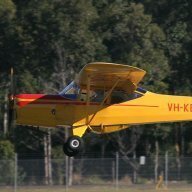-
Posts
2,728 -
Joined
-
Last visited
-
Days Won
35

David Isaac replied to Old Koreelah's topic in Aircraft Incidents and Accidents

David Isaac replied to coljones's topic in Jabiru

David Isaac replied to coljones's topic in Jabiru

David Isaac replied to coljones's topic in Jabiru

David Isaac replied to coljones's topic in Jabiru

David Isaac replied to coljones's topic in Jabiru

David Isaac replied to coljones's topic in Jabiru

David Isaac replied to coljones's topic in Jabiru

David Isaac replied to coljones's topic in Jabiru

David Isaac replied to coljones's topic in Jabiru

David Isaac replied to coljones's topic in Jabiru

David Isaac replied to coljones's topic in Jabiru

David Isaac replied to coljones's topic in Jabiru

David Isaac replied to coljones's topic in Jabiru

David Isaac replied to coljones's topic in Jabiru

